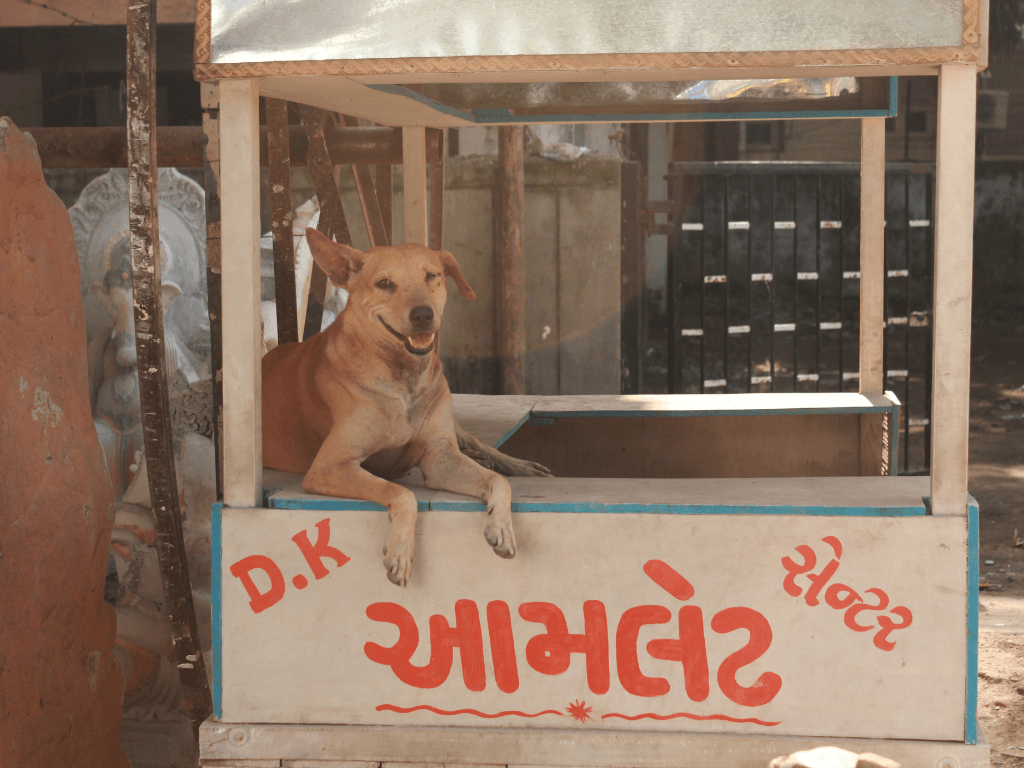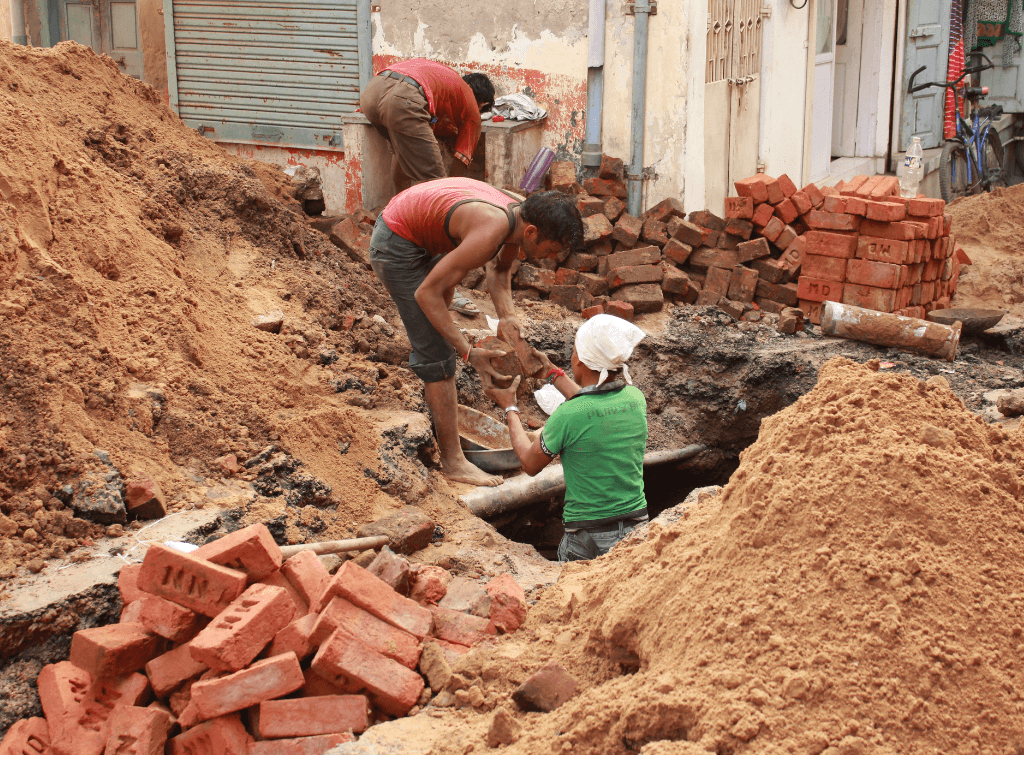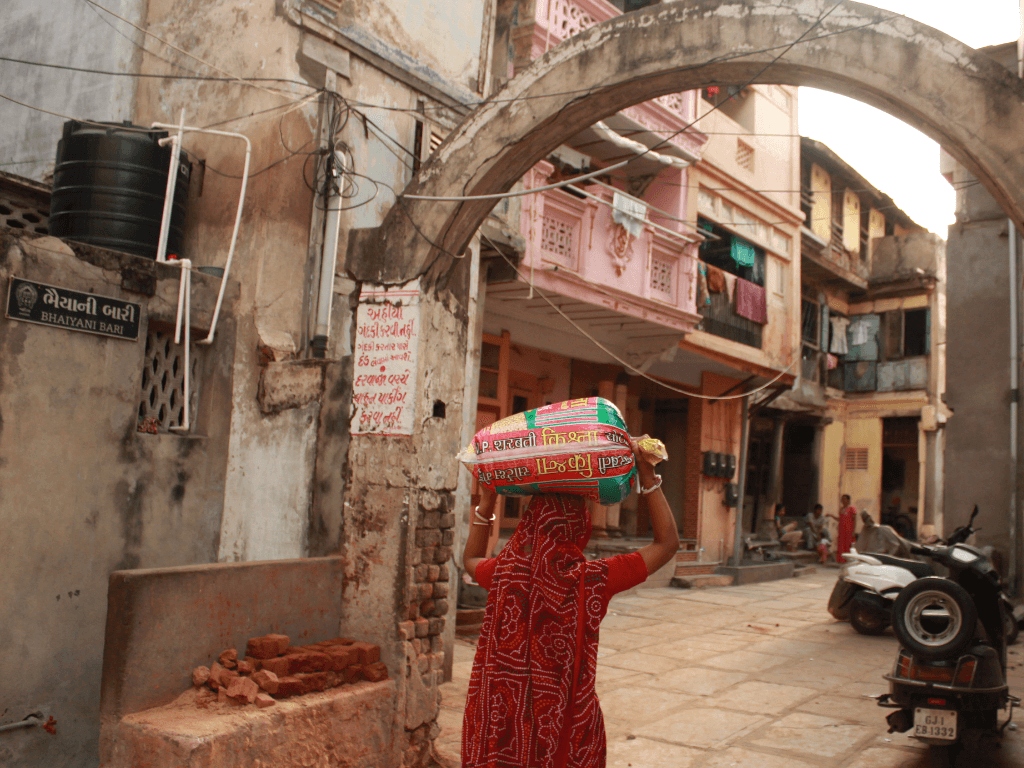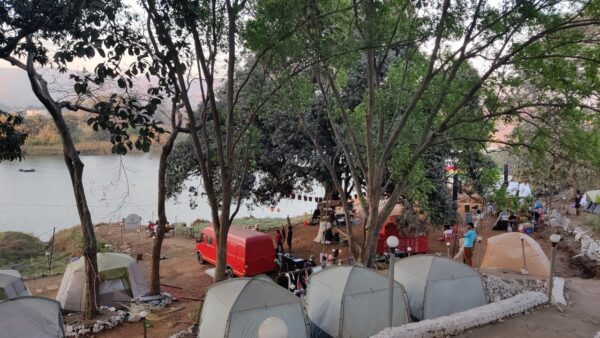Ahmedabad, the city often mistaken for the capital of Gujarat, is equally loved and dreaded for its summers. It boasts of a variety of mangoes such as Kesar, Rajapuri, Totapuri and Badam which bring tourists from across the country and beyond, willing to bear the scorching temperatures and carry a few crates back home along with their ‘Amdavadi’ memories. These usually include stories of the unbearable heat and spiking mercury such as on May 12 this year when it touched a blinding 45.8 degrees Celsius, peaking a trend of unprecedented high heat days seen over the past few years.
Even as government and municipal authorities activate the Heat Action Plan (HAP), informal outdoor workers such as 36-year-old Pramilaben Parmar and rickshaw drivers like Manoj Singh find little respite. The HAP has helped to significantly reduce heat mortalities in the past decade but the question now, in the face of relentlessly rising temperatures and predicted heat waves, is whether the plan is adequate to make a positive impact on lakhs of people who are forced to be outdoors in temperatures predicted to rise and whether it is comprehensive enough to address the issue of urban heat in all its complexity.
Parmar, a sweeper by morning and domestic help by afternoon, walks three kilometres from her home in Vejalpur to work at Jodhpur Cross Roads (roughly 30 minutes) to save transport costs. “The rubber soles (of chappals) burn my feet,” she says, showing the sunburned sole. “It’s really hot when I leave home at 2 pm, but it’s better on my way back. My madam gave me an umbrella but I feel odd using it when it’s not raining.” Her daughters, Roma and Jyoti, who also work as domestic help, are less tolerant to the extreme heat. “Jyoti was down with diarrhoea this month and Roma constantly complains of headaches. She collapsed at work a few days ago. We took her to the health centre and they gave her ORS (Oral Rehydration Solution). They told us not to step out in the afternoons but that’s our fixed work time.”
Issuing an advisory can be a precautionary measure but not a solution to the phenomenon of heat waves, recognised as a direct manifestation of Climate Change. Smartphone weather apps display that ‘it feels like 50 degrees Celsius’ — it sure does for outdoor workers, slum dwellers, the elderly, pregnant women and children, people in informal tiny settlements which heat up to unbearable levels during the day.

Photo: Khayal Trivedi
Ahmedabad has seen an unusual rise in the number of heat waves in the last decade with temperatures soaring to as high as 48.6 degrees Celsius in May 2016 – beating a century-old record – and reaching 34.8 degrees Celsius for the first time in the winter month of January the following year. From 2010 to 2022, the city recorded an estimated 3,500 heat-related deaths and these are only the reported ones. The most brutal heat wave – and the one that led to the first-ever HAP – was in May 2010 when the mercury crossed 48 degrees Celsius in the unprepared city and claimed the lives of 1,344 people. The number of fatalities has since dropped to double digits with barely 30 being recorded this year.
That 2010 heat wave was a rude awakening for the governing bodies to grapple with the seriousness of a heat-related situation and draw up strategies for combating the challenge of heat waves brought on by the climate crisis. This led to drafting of the HAP with counter measures and early warning systems explicitly for Ahmedabad; it was perhaps South Asia’s first tailored heat action plan that focused on an issue which was to become a major determinant of how Ahmedabad and its people would function through the mercury-soaring months. The plan has since been updated in 2016 and 2019.
Heat Action Plan
At its core, the HAP highlights strategies for building public awareness and community outreach about heat waves, putting in place early warning systems with colour-coded alerts – yellow, orange, and red – as a warning to people and government agencies, building capacity of institutions such as hospitals and health centres to acknowledge heat-related illnesses and offer treatment, training healthcare professionals to deal with heat-related illnesses, and popularising both preventive methods and adaptive measures to reduce heat exposure of people.
The 2013 HAP was jointly drafted by the Ahmedabad Municipal Corporation (AMC), Indian Institute of Public Health (IIPH), Gandhinagar, Public Health Foundation of India (PHFI), Natural Resources Defence Council (NRDC), and the Climate & Development Knowledge Network (CDKN). The key figure in implementing the HAP work is the AMC-appointed nodal officer, who is responsible for alerting government agencies, liaisoning with the media and NGOs during or before extreme heat events to disseminate information.
The AMC sends out the following alerts: Yellow for temperatures between 41.1 and 43 degrees Celsius; orange for temperatures between 43.1 to 44.9 degrees Celsius; and red for temperatures at and above 45 degrees Celsius. The alerts prompt people to take precautions to prevent heat-related illnesses. The HAP includes measures such as providing IV fluids and ice packs to hospitals and public health centres, providing portable drinking water at public spaces with special attention to vulnerable areas, changing school and college timings so that children are not exposed to extreme temperatures.
It is important to note that the HAP, in its iterations, addresses a heat wave situation with detailed steps to combat it, it is not a plan with a preventive approach to heat waves. These, of course, lie beyond the scope of a single city and foreground the larger national – even global – issue of Climate Change that’s turning into a crisis, threatening people’s health, agriculture and food security, incomes and eventually the economy. Large parts of India and Pakistan were in the grip of a severe heat wave this year – March was the hottest in India in 122 years and nearly 70 per cent of the country had faced heat waves by April-end – according to an estimate of worldweatherattribution.com.
“Some of the main causes for urban heat are human-induced, which include Climate Change and unsustainable patterns of growth. If you add too much concrete in a city, you are increasing the urban heat island,” says Dr Minal Pathak, senior scientist and one of the lead authors of the Intergovernmental Panel on Climate Change (IPCC) Sixth Assessment Report. “As our cities keep growing, the open spaces, green covers and forests decrease and we keep on adding more concrete increasing the heat island effect, which is topped by climate change resulting in more heat,” she says. (see interview)
Urban growth and heat waves
Ahmedabad’s built-up area expanded by a staggering 72.5 per cent between 2005 and 2016 (from 81.6 square kilometres to 141 square kilometres) while its green cover depleted by 20 per cent and open areas by 17 per cent, according to the Gujarat forest department two years ago. [1]
Other studies also bear this out. “Multi-temporal Landsat data of 1997, 2007 and 2017 shows the sprawl of Ahmedabad… the study of decadal land use/land cover of AMC area from the year 1997 to 2017 reveals that the built-up area has increased by many folds (at) the expense of agricultural land,” notes this study. [2]
The gradual decline in green and open areas, a direct consequence of human activities and urban development, brought Climate Change impacts such as extreme weather events, especially scorching heat, to Ahmedabad. The IPCC’s Sixth Assessment Report warns of the detrimental repercussions of our continued indifference to the crisis. Branded as “a reality check”, it states, among other things, that human activity will be the root cause of approximately 1.5 degrees Celsius warming over the next 20 years. We might as well brace ourselves for 48 degrees Celsius to be the new 45 degrees Celsius. The trend of short winters and springs, unpredictable monsoon patterns, and long and searing summers are here to stay.
The India Meteorological Department, Pune, identified India’s core heat wave zones as Rajasthan, Andhra Pradesh and Odisha, in its Climate Hazard and Vulnerability Atlas,[3] the first of its kind released in January which identified states predicted to experience the highest number of heat waves.
Heat waves, according to scientists and analysts, are likely to become an annual feature in the sub-continent. The long-term approach can be to restore green and open spaces, but the immediate measure lies in HAPs. The situation demands that comprehensive HAPs are drawn up for every city and region to combat and adapt to them, and that the existing ones are updated and implemented with urgency.
“The purpose of the Heat Action Plan is to combat heat-related impacts on health. The plans are not designed to reduce carbon emissions. It is important to understand that these are adaptation plans, not mitigation plans,” says professor Dileep Mavalankar, director of IIPH and an authority on heat waves who helped implement the first HAP in 2013.
Other states and cities across India have since adopted versions of the HAP or created their own HAPs to combat the ever-increasing temperatures, especially after the 2015 heat wave claimed at least 2,500 lives nationwide. The HAP, which includes early warning text messages to mobile phones, has expanded to nearly two dozen heatwave-prone states and more than 130 cities and districts.
When the National Disaster Management Authority (NDMA) identified 23 heatwave-prone states two years ago, the HAPs helped in sending out early warnings of predicted extreme temperatures, stocking hospitals and care centres with ORS, ice packs and IV fluids, and regulating work timings for outdoor workers. States established their own protocols: Andhra Pradesh restricted travel between 11am and 5pm while Maharashtra closed market areas during afternoons, sprinkled mist in public places, and strengthened inter-sectoral coordination, according to the Natural Resources Defence Council.

Photo: Khayal Trivedi
Restricting outdoor work during red alert days is essential. “On those days you need to see if work can be postponed and done in shifts of 7am to 11am and 5pm to 8pm. Red alert days of a heat wave means people must not engage in hard manual labour, but if they must continue working, they need to be provided with shade and made to rest every half hour,” says Mavalankar.
Unavoidable outdoor work
An area of concern in the Ahmedabad HAP has been that while the plan speaks of the poor and vulnerable communities, it falls short of providing them adequate relief against heat waves. Most of them live in makeshift tarpaulin tents on pavements, where the fumes from vehicles add to the heat.
From March to May, when fewer autorickshaws ran in Ahmedabad in the afternoon following the HAP advisory, but this resulted in jampacked buses of Bus Rapid Transit System (BRTS). Manoj Singh, 42, originally from Uttar Pradesh, braved the heat to ply his autorickshaw. “If I stop driving my auto, how will I feed my family back in UP? They rely on me to send money home. It is tough, but I don’t really have a choice,” he says. Singh has padded the leather seats and roof of his autorickshaw with cotton sheets to get some respite.
Limba Ram, a security guard of a housing society in Bodakdev in Ahmedabad’s city centre, is seldom allowed to leave his post, even during the blazing afternoon sun. A tattered umbrella provides him some shade. “One of the residents gave us a spare watercooler as the tap water is very hot from noon till 7pm. If the car park is vacant, we shift there,” he says.
His sons, who cultivate seasonal crops at his farm in Rajasthan, have little respite from the heat. “We cannot stop working because of the heat,” he says.
The current HAPs have minimised the impact of the increasingly volatile climate crisis, but as a long-term solution, researchers insist on implementing strict and landslide reductions on carbon footprints and super pollutants, landscape restoration and afforestation, and aligning the HAP with the larger urban or city plans. “When dealing with Climate Change, we need to have both mitigative and adaptive measures. The current HAPs only deal with adaptive measures which are response-based plans,” says Dr Pathak.
Cooling off
The ‘cool roof’ initiative in Ahmedabad, which the municipal corporation piloted in 2017, is a low-cost solution for low-income and marginalised dwellers. The reflective paint reduces indoor temperatures by two to five degrees Celsius. Originally introduced by the Mahila Housing Sewa Trust (MHST), a non-profit organisation in the city, as the Air Light Ventilation initiative, it now forms a core part of the HAP.
“In 2010, we started training women at the grassroots level to map energy consumption in slum dwellings. We wanted to help them with more efficient alternatives for lighting and cooking. We realised that ventilation was a larger problem that needed to be addressed,” says Bhavna Maheriya, who has been a programme manager at MHST for 22 years.
“Their cramped dwellings have no windows to allow natural light or air, so people had to switch on lights even during the day. As there is no ventilation, people prefer being outdoors even in extreme heat conditions. We designed a roof, replacing the tin with a dome-shaped fibre sheet, which allows natural light and air in. We have installed 7,000 roofs since the initiative was piloted and research shows that people have reduced energy consumption by 60 per cent,” she adds.
This pilot resulted in the national-level Indian Cooling Action Plan (ICAP) released in 2019 to reduce the requirement for air conditioning, which in turn would limit the urban heat island effect caused by CO2 and hydrofluorocarbon emissions and super pollutants. But despite this effort, this year has already seen a record rise in air-conditioning and cooling unit sales, reported Business Standard. [4]
A national HAP may not work for a rapidly and intensely heating but diverse Indian landscape; states and cities must develop and implement their own HAPs. “National plans are impossible as the thresholds vary in cities,” says Mavalankar. “Ahmedabad temperatures go beyond 45 degrees Celsius but Mumbai, Chennai, and Visakhapatnam may not reach there because they are coastal areas. But these cities have extreme humidity so even at 40 degrees Celsius, people may suffer heat strokes,” he adds.
Even the best HAP has not been able to address the long-term impact of denuding natural areas and green zones in India. Development, as commonly understood in cities, can no longer be divorced from its impact such as extreme heat or heat waves. Ahmedabad’s planners have to revisit urban growth and development plans; its expansion cannot be divorced from its ecology.
Ananya Desai, currently based in Ahmedabad, is a university professor by day and writer by night. She cares deeply about climate change and issues pertaining to violence against women. She is working on her first novel.
Cover Photo: Khayal Trivedi




